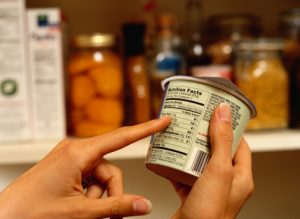 Whether you are health conscious or not, food labels are designed to help you make decisions when choosing food. However, if you don’t know how to read a food label the information may as well be nonexistent.
Whether you are health conscious or not, food labels are designed to help you make decisions when choosing food. However, if you don’t know how to read a food label the information may as well be nonexistent.
There is ample information presented on a food label, but if you want to get the most out of the food you eat, there are key criteria you should pay attention to when you turn over that packaged item. Furthermore, if you have specific needs then uncovering what information is presented on a food label can give you the benefits you require.
What to look for on a food label if you need…
Advertisement
Food label details to read for energy
Whole grains are essential for energy, so scan the ingredients for the term “whole” prior to any listed grain. Unlike refined carbohydrates, whole grains work to keep us energized. Refined carbohydrates merely spike our sugar level which leads to an inevitable crash. Additionally, whole grains keep us full, so you’ll find you’re probably snacking less throughout the day. You should aim for at least three servings of whole grains a day (one ounce each).
Food label details to read for weight loss
The calorie section on a food label is what you’ll need to focus on if weight loss is your goal. Even reducing your daily caloric intake by 500 will result in a drop of one pound each week. The tricky part is determining the lowest amount of calories per serving. A good way to get through this issue is by comparing similar items to each other. Each brand may use a different serving size so the calories may appear to be more on one package than another. For example, one bag of chips could have 130 calories per 13 chips where another could have 130 calories for nine chips. See the difference? The trick is to figure out how many calories each chip has and buy the lowest calorie option.
Recommended calorie intake for a person who is active is 1,800. If you’re shorter than average, or not so physically fit, aim for less.
Food label details to read for strong bones
Strong bones are a hot topic as we age because bone density can diminish over the years. This is dangerous as it can lead to fractures which can impede one’s life. If bone strength is your goal, focus on the calcium content on the food label. Per serving, the recommended calcium should fall between 20 to 30 percent. It is always best to get nutrients from food, so try to skip the supplements and opt for dairy products, dark leafy greens or even fish.
For additional support check for vitamin D as well. The vitamin D content should account for 10 percent of your daily dosage. Vitamin D is essential for the absorption of calcium, so taking both together can help promote stronger bones.
If you’re over the age of 50 aim for your calcium intake to be 1,200 milligrams.
Regardless of what your health goal is, it’s important to understand food labels. By taking the time to read labels you can have better odds at achieving your goal and eating well.
Related Reading:
Food label makeover to fight obesity
Do you read food labels while you’re grocery shopping, looking for grams of sugar and fat? If so, you may soon notice some changes – the first in 20 years –designed to reduce obesity and its related diseases among Americans. Continue reading…
Advertisement
Are ‘fitness foods’ making you fat?
Everyone wants to get thin quick and companies know this. They brand their food items as ‘fitness foods’ so you believe that by simply eating them, you’re doing your body good. But these fitness food fads are coming undone by recent research. Continue reading…
Sources:
http://www.prevention.com/food/guide-food-labels-and-nutrition-facts
